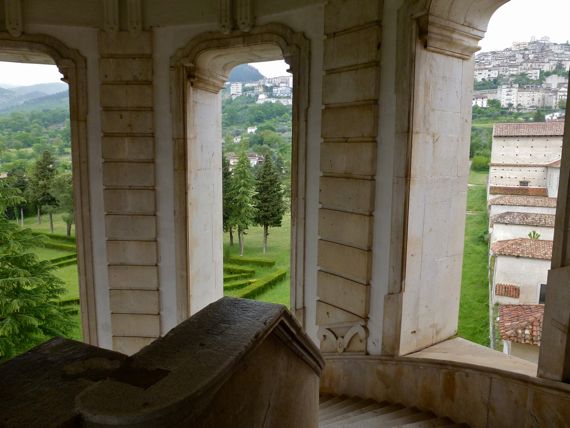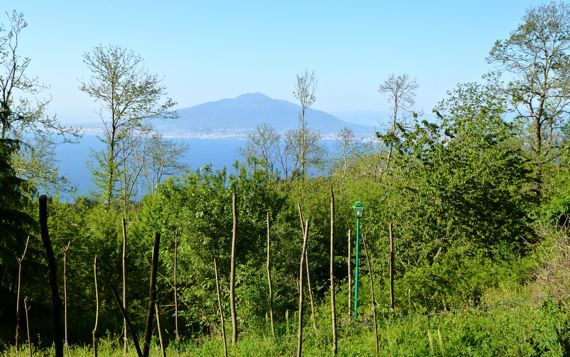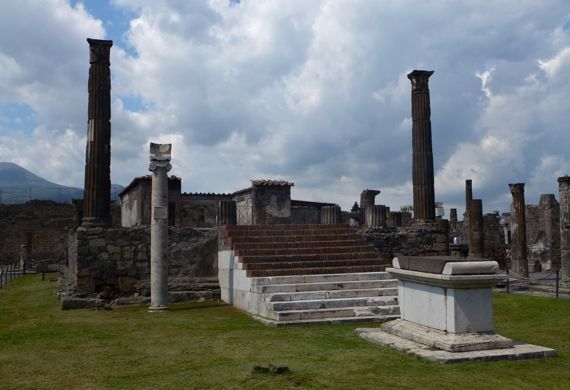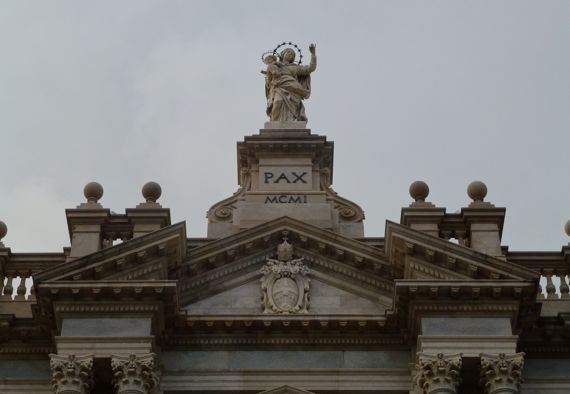Musings

Little towns hang on the mountain hillsides here. I imagine from the day a settlement was established its residents have been activating all their engineering chops to graft their homes, streets, and other built environment modifications onto the landscape. They cantilevered a surface out over a sculpture garden (center, along the street), added the kiosk and pumps, and voila!, the town has a fuel stop.
This is Novara di Sicilia (a town of many names), on the (slow—and scenic) upper north slope of the road between the Tyrrhenian coast and the Ionian coast. At the highest elevations, we saw snow sticks along the road edge, and the leaves were just coming out on the trees. Lots of wildflowers, too—and thistles—this is grazing land.

After Novara we crested the drainage divide, and had our first views of Mount Etna (Mongibello in Italian), although this view is from the free botanical garden in Taormina, where we’re staying tonight and tomorrow night. This is a major tourist stop, and the main walking street is over-run with the buggers. We strolled in clouds of German, mostly, but also Spanish, Italian, a bit of English and Spanish, and several idioms I could not identify.
We plan to visit the archaeological zone in the morning before the heat of the day sets in.
My hand-washing dried in three hours (well-squeezed cotton; faster for the fake fabrics; slower for the padded socks); this place is both warmer and drier than the northeast coast where we were the last two nights. At least today.
Posted at 1:38 PM |
1 Comment »

When you visit a volcanic island named Vulcano, ya gotta expect to be careful. So, don’t walk on the wild side, and be careful around the sulfurous clouds. Seriously. Cough cough.
Posted at 3:05 PM |
Comments Off on Grave danger of intoxication

We were welcomed to Sicila (see-cheel-ya) by this golden statue. We drove off the car ferry, and motored down the autostrada, and it wasn’t until we stopped for fuel (diesel) that I actually put a foot down on Sicilia.
Posted at 10:22 PM |
Comments Off on Welcome to Sicilia

I found the spitting rain beautiful in its own way, and was glad we could mold our schedule to it. This is the Certosa di San Lorenzo di Padula, which the nation has restored. Despite its over 300 rooms, we saw maybe two dozen—a choice two dozen. This is the elaborate staircase—I’m not sure why it was added to the complex.
We all enjoyed the museum of Western Lucania, tucked into the center of the area we could explore. Expect a pottery photo or two to appear at some time in the future.
Posted at 10:22 PM |
Comments Off on Rain didn’t best us

Sometimes it doesn’t get any better than this. (Outside the frame is wine, bufala di mozzarelle, prosciutto, apples, tomatoes, and more.)
Posted at 3:40 PM |
2 Comments »

Sea coasts host many a land’s end. This is the one at the west end of the Sorrentine Peninsula. Its name is usually given as Punto di Campanella, or a version thereof. The latest construction there I think dates to WWII, and the guidebooks say ruins go back to Roman times. From the landward side, this is an obvious spot to keep track of passing vessels. From the water, however, this is a difficult spot to access.
Oh, and that looming chunk of rock on the horizon? That’s Capri. (Where’s the hem on your slacks?)

That hike occupied our morning after we tore ourselves away from the fine table our B&B set. Mid-day we drove south to Paestum, a long-occupied city that today has some Greek ruins (temples/civic-ceremonial architecture) set amidst mostly Roman residential streets and housing complexes. Here’s a photo of the two largest standing stone buildings, within, I think, a walled precinct. I wonder how much time the hoi palloi spent near them.
Posted at 6:37 PM |
Comments Off on Punto Campanella and Paestum in one day

We “did” Amalfi today, inasmuch as anyone can absorb a town in one day. Most people come to Amalfi on a bus, stay perhaps long enough to tour the main church, stroll the streets, buy some limoncello (and boy-o-boy is it tasty!), perhaps go as far as the paper museum, maybe get a bite for lunch, then head back down to the bus parking area.
We came by car, and configured our visit differently.
We arrived in a lineup of buses, so that part is similar.
We did stroll the streets, just a bit.
We did get a simple (early) lunch in a white-walled patio, very pleasant.
Then we headed for a walking trail that heads up the valley, climbing along the east wall, up up up.
Amalfi is on a little bit of land at the mouth of a small river that whooshes downhill. We followed the river upstream. In the city, it’s underground, running through a big pipe with vents up into the street that emit a tremendous water-whooshing noise above the paving stones.
Outside the town, it’s less confined, but the valley bears the ruins of factory after factory, most just some standing walls, with bare window-holes gaping.
Amalfi was famous for being an early production center for paper. Since we skipped the museum, I don’t know what the fiber was that the paper was made of, but internet information suggests cotton.
So I ask: where was the cotton grown?
Anyway, we had a grand time hiking in the dappled shade in the forest above Amalfi, all the way until there’s a fence across the trail, protecting forest resources, the sign said—and looking down onto the lemon groves in the valley below the trail when we were closer to town.
Posted at 10:22 PM |
Comments Off on Amalfi, strolling and hiking

How do I say, the ducks, today they got in their row.
Here’s a view of the monster discussed yesterday, but from farther to the SE—from a planted pine forest called a pineta. I very much enjoyed the smell of the dampness of spring in these piney woods. And, also, I admit, I enjoyed the spongy duff underfoot after the solid tufa and paving stones we walked (for many klicks) yesterday.
Posted at 4:21 PM |
Comments Off on Underfoot changes; visual landmarks—similar

I didn’t really stand around and listen to the guides talk to their groups, but I did overhear one guy (in authoritative British English) say that this is the oldest temple here, and another say the white marble came from Ephesus (west coast of what is now Turkey). Both mentioned that the white pillar to the left of the steps supports a sundial. One of these three tidbits is mentioned in the WikiPee entry for this, the Temple of Apollo at Pompeii.
I might have given you a photo of a (wild?) poppy or a hedge (huge, mind you) of rosemary, but here you go with the imposing columns thing.
I found the sundial and a large water basin to the right out of the frame particularly interesting. They indicate this wasn’t a pure Greek version of Apollo-worship being replicated, but a Romanized approach to the adopted Greek deity.
That lump in the far left background is the monster that did in Pompeii in AD 79. P is on a hill relative to the sea (Gulf of Naples) and the Sarno River to the south, although it doesn’t look like it on Google Maps. My sense was this temple was on the highest point nearest the water, although there’s architecture between it and the edge of the Pompeii landform. Anyway, plenty to ponder here.
This must have been spiff-up day for the park personnel, as the grass was newly cut (not mowed).
Posted at 1:13 PM |
1 Comment »

I find it pretty darned appropriate to have “PAX” atop the main church of a Catholic city in a Catholic country, overlooking the town square. I can say that without getting snarky, can’t I?
Posted at 3:14 PM |
Comments Off on PAX over the square











